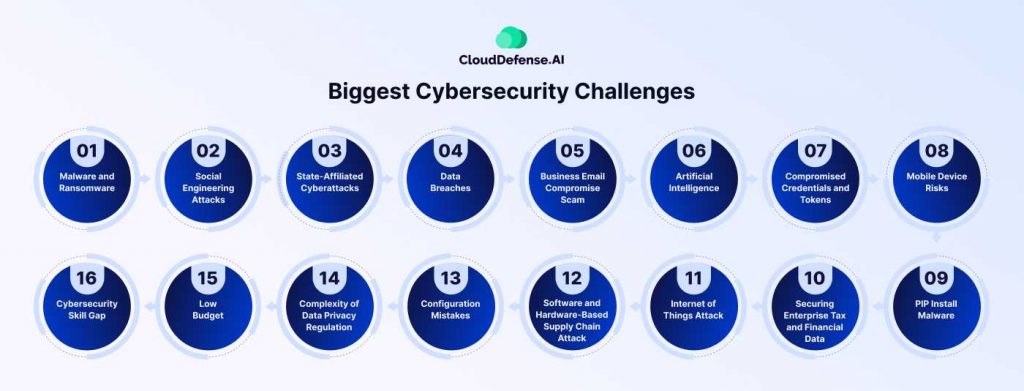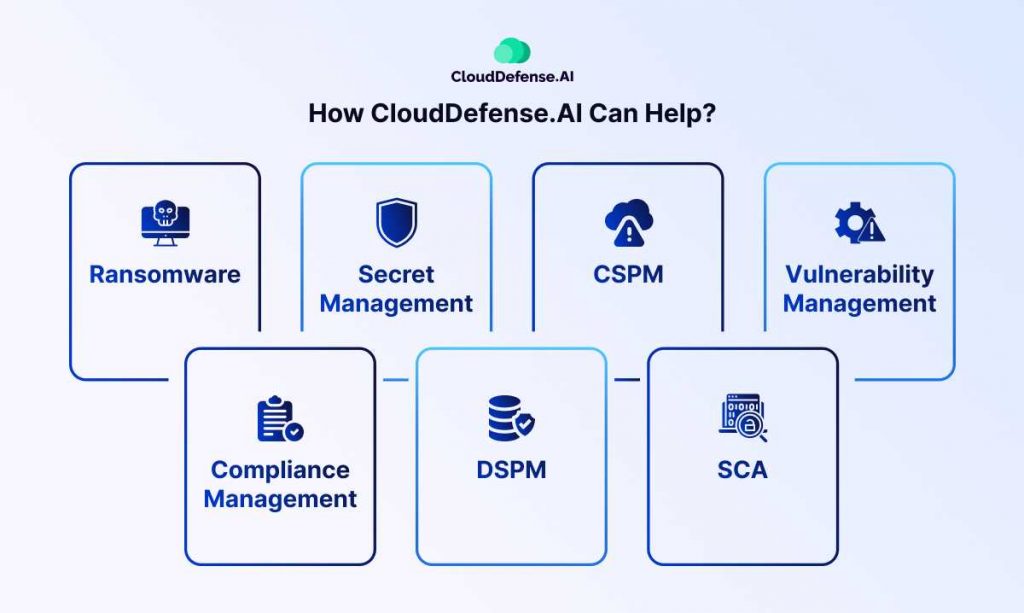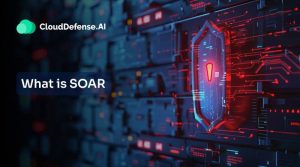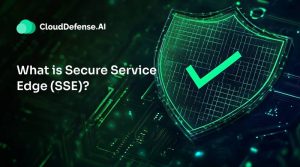The year 2025 is poised to be an important one in the cybersecurity world. As attackers grow more sophisticated and threats get smarter, organizations face a dual challenge: protecting against external cyberattacks and managing the vulnerabilities inherent in new technologies like AI and cloud computing.
The stakes couldn’t be higher, with cybercrime damages projected to soar to $10.5 trillion by 2025. The convenience of digital advancements has created new opportunities—but also unprecedented risks.
To help your enterprise stay one step ahead, this article uncovers 16 of the most pressing cybersecurity challenges in 2025 and how to build smart, proactive strategies to overcome them successfully.
Biggest Cybersecurity Challenges in 2025

Enterprises are constantly in threat from cyberattackers as they are refining their techniques and utilizing modern technologies along with vulnerabilities. Before we dive into the details, here is an overview of the biggest cybersecurity challenges your enterprise might face:
- Malware and ransomware.
- Social engineering attack.
- State-affiliated cyberattacks.
- Data breaches.
- Business email compromise scam.
- Artificial intelligence.
- Compromised credentials and tokens.
- Mobile device risks.
- PIP install malware.
- Securing Enteprise’s tax and financial data.
- Internet of Things attack.
- Software and hardware-based supply chain attack.
- Configuration mistakes.
- Complexity of data privacy regulation.
- Low budget.
- Cybersecurity skill gap.
Here we will take a look at some of the biggest cybersecurity challenges to enterprises in 2025:
Malware and Ransomware
Malware and ransomware are one of the biggest cybersecurity challenges enterprises are going to face in 2025. Malware is a malicious program designed to exploit the enterprise’s system whereas ransomware is also a type of malware that encrypts the victim’s system or files in return for payment.
Ransomware attacks have been present for years and over the years, this attack has evolved in many ways, allowing attackers to leave a huge impact on enterprises. Research done by CheckPoint stated that ransomware has reached a $20 billion industry. Like other years, 2025 will also witness many high-profile ransomware attacks.
Zero-day vulnerabilities have been the largest contributor to ransomware as they enabled organizations to exploit file transfer tools and launch ransomware attacks on thousands of systems. Implementing advanced endpoint security solutions and other ransomware solutions can help you keep your data and devices protected from ransomware.
Social Engineering Attacks
With the increase in the use of cloud services, enterprises have seen a sharp rise in social engineering attacks. It is a popular cyberattack used by malicious actors to manipulate employees of enterprises and extract sensitive credentials from them. This type of attack usually involves spear phishing, pretexting, and other attacks where they trick users into revealing sensitive information.
These attacks can seriously jeopardize the continuity of a business and lead to financial and reputational damage. Not only the enterprises have to implement security protocols, multi-factor authentication, and stringent policies but also need to train employees.
State-Affiliated Cyberattacks
In recent times, especially during the current Russia-Ukraine war, enterprises in various regions have seen a lot of state-affiliated cyberattacks. It used to be a rare attack but in recent times, many government agencies directly or indirectly have launched such attacks for political and warfare motives.
State-backed cyber criminal groups usually launch DDoS attacks, ransomware, wipes, and other severe attacks to carry out their malicious intent. Recently a suspected Russian-affiliated hacker group has carried out an advanced DDoS attack on Microsoft, X, and Telegram.
According to sources, Iran-backed hacker groups, Agrius and KarMa have recently launched wipers and other malware attacks on Israeli organizations.
Data Breaches
Over the decades, data breaches have always been one of the major enterprise cybersecurity challenges. Even though cybersecurity technology has come up with many advanced techniques, cybercriminals also found ways to bypass them and steal data.
Attackers are coming up with nuanced and meticulous ways to target the weakest link in infrastructure and gain access to sensitive data. The theft of sensitive customer information or corporate data can have a huge impact on an organization. With stringent regulatory laws in place, a data breach in an organization can cause severe fines and litigation.
Business Email Compromise Scam
With the introduction of generative AI, Business Email Compromise or BEC scams have become a common choice for criminals. In this type of scam, malicious actors utilize attacks like phishing to gain entry into an employee’s email account.
Once they gain entry, they monitor all the activities for opportunities where they can deceive them and lure them into making fraudulent payments. In the BEC scam, the attackers masquerade as a trusted individual and craft a legitimate email from a compromised account.
The impact of the BEC scam is mainly financial and it can cause an enterprise to lose thousands of dollars. Since this scam doesn’t involve malware and only exploits human vulnerability, it is difficult to detect and recover from this scam. Utilizing awareness programs and strong email security can help you minimize such scams.
Artificial Intelligence
The rise in AI especially in the usage of generative AI platforms has affected organizations both in good and bad ways. Artificial intelligence enabled attackers not only to enhance and sharpen their attacks but also to introduce nuances in them to boost their effectiveness.
GenAI platforms largely help attackers to sophisticatedly craft phishing emails and make them look legit so that the enterprises can assume the email has been generated from the intended source.
Even though most GenAI platforms don’t allow users to create malware, attackers bypass them to utilize their capability and develop sophisticated malware with ease. Modern attackers are also using AI capabilities to create deep fakes and dupe employees for their malicious intent.
Deep fake AI is enabling attackers to create convincing fake visual content and images to fool users and make them think they are legitimate. From blackmail, impersonating someone, and spreading misinformation to reputational damage, deep fake AI has a significant impact on enterprise cybersecurity.
Compromised Credentials and Tokens
Remote working models and hybrid work brought a new shift in enterprises which allowed employees to work from home from distant locations while having access to cloud or on-premises environments.
However, it also introduced security concerns as cybercriminals started targeting tokens that enabled employees to get access to enterprise applications, data, and resources. A lot of credentials and tokens are often insecurely stored with cloud service providers and third-party platforms, enabling attackers to steal them.
This cybersecurity challenges has been affecting organizations since 2020 and it is still a relevant cybersecurity issue in 2025. Since the adoption of remote work, Microsoft has faced several token-related issues which include misconfigured Azure SAS tokens and theft of insecurely stored MSA consumer signing keys.
Recently in the last quarter of 2023, another token-related issue occurred in Octa where attackers stole credentials and got access to sensitive files like session tokens and cookies.
Mobile Device Risks
Along with compromised tokens, enterprises will also face significant cybersecurity challenges from the risk associated with the usage of mobile devices as endpoints. The main issue with mobile devices is employees often download applications containing malicious codes, malware, or vulnerabilities.
When these applications are installed in the device, not only it compromises the enterprise’s network but also causes injection of spyware and unauthorized access to sensitive data.
Many enterprises utilize mobile device management or MDM solutions to secure the mobile devices of employees in a network. Cybercriminals target the vulnerabilities of MDM solutions and get access to the system, leading to data breaches and the ability to install malware.
This is a serious issue that enterprises need to address in 2025. The best way to mitigate the risk is by employing mobile device security measures that include device management protocol, mobile antivirus, regular updates, and others.
PIP Install Malware
The use of open-source software has made a significant impact on the cybersecurity of enterprises in 2025. Nowadays many applications made for the cloud utilize open-source libraries and dependencies, where these libraries are not properly secured.
As a result, cybercriminals target these open-source libraries and software repositories to gain access to applications and inject malware or vulnerabilities into them. Most of the time developers and security testers overlook the security aspect of these third-party libraries and dependencies, causing serious application security concerns.
Once a developer uses a compromised library or dependency, attackers utilize typosquatting, brandjacking, or account takeover attacks to embed malware in the application. Among all these, typosquatting is a widely used attack where malicious actors create a library and package having a similar name to that of the trusted ones.
Securing Enterprise Tax and Financial Data
Another serious cybersecurity challenges that will affect enterprises in 2025 is safeguarding tax and financial data. It has become vital to take robust security measures during the tax season because a lot of sensitive information about an enterprise is transferred during this time.
Attackers are always looking for opportunities to exploit the vulnerability to expose themselves to the transmission and compromise or steal all the data. Besides, attackers often use tax information to harm their reputations by causing tax fraud. The only way to address this cybersecurity challenges is by implementing multi-factor authentication, password security, and robust protection of enterprise systems.
Attackers also use phishing attacks by masquerading as tax officials and tricking employees into extracting all the necessary financial data. Organizations should enforce proper email security and conduct awareness programs to inform everyone regarding phishing attacks to reduce this kind of attack.
Internet of Things Attack
In recent years, the industry has seen massive adoption of IoT devices as it facilitates enterprises to seamlessly exchange data with other devices and systems over the internet. According to sources more than 60% of enterprises in the world use IoT applications.
However, the massive growth has caused a significant rise in security concerns associated with IoT devices and applications. Traditionally IoT devices don’t come with robust security measures and this allows cybercriminals to perform malicious activities.
Even though vendors are coming up with new security measures, it is still a challenge for enterprises in 2025. Attackers are coming up with innovative ways to exploit weaknesses in IoT devices and gain access to sensitive information.
Besides, attackers often launch this attack to install malware, move laterally in the network, or damage the device. IoT attacks can cause serious damage to the business in many ways. An attack named “Mirai” was utilized by attackers to exploit various IoT devices and use them cohesively as a botnet.
Software and Hardware-Based Supply Chain Attack
2025 is expected to witness a lot of software and hardware-based supply chain attacks that cause serious implications for organizations. This type of attack mostly originates due to a lack of stringent security measures in third-party vendors and suppliers the organization works with.
It is quite difficult to test the security of third-party components that an application connects to. Performing due diligence on the security measures of the third-party vendor and supplier can ensure that they employ necessary security protocols. If one component in the software supply chain becomes vulnerable, then the whole application will become vulnerable.
Ensuring regular updates, maintaining proper patch management, and using SBOMs will ensure the components are secured. SolarWinds Hack in 2020 is a well-known supply chain attack where attackers exploited IT performance monitoring systems and gained access to customers’ data.
Configuration Mistakes
Every organization makes the necessary effort to successfully implement their security systems, but errors like misconfiguration still come up, in the way the software is set up and implemented.
Many trials were conducted where organizations used external penetration testing and found a misconfiguration in their security measures. Deployment of necessary security measures like CSPM for cloud security can help you identify misconfigurations and mitigate them before they are exploited by attackers.
Complexity of Data Privacy Regulation
Data privacy regulations are evolving year after year and it is becoming complex for enterprises to tackle these cybersecurity challenges. As the number of attacks on customer information is increasing, data privacy regulation councils are setting new standards.
This is increasing the compliance burden on organizations as they have to navigate through complex regulation policies and laws. Having the support of a robust compliance tool, will streamline your compliance requirement process and help you always stay compliant to specific data privacy regulations.
Low Budget
High inflation, ongoing war, recession fear, and fluctuating interest rates have affected many IT enterprises, causing them to lower their budget in various aspects. Even though the rising cyberattack has made every enterprise consider cybersecurity as a priority, the rising inflation has made many organizations compromise their security effort.
Moreover, security has always been considered an expenditure as it doesn’t have any actual ROI. This factor has affected the overall security posture of many organizations and made it difficult for CISOs to navigate through modern cyberattacks.
Cybersecurity Skill Gap
The modern cybersecurity landscape is always evolving, coming up with new technologies and methodologies. As a result, there is significant skill storage in the security industry and the number of employees for this domain is pretty small. Businesses have been facing this issue for years and it is still relevant in the year 2025.
The limited number of employees with the necessary skill set to navigate through modern cybersecurity challenges has affected many organizations. Due to this, enterprises fail to make the most out of their cybersecurity investment and efforts, leading to reduced security posture. Recent studies revealed that there are still 3.5 million open positions in the cybersecurity domain.
How CloudDefense.AI Can Help?

Navigating through modern cybersecurity challenges in 2025 is a daunting task and it becomes cumbersome for enterprises to maintain an optimum security posture. However, integrating solutions like CloudDefense.AI will ease up all the issues and help you seamlessly address all the cybersecurity challenges that are affecting the security of the enterprise.
It is a top-tier multi-layered CNAPP platform that safeguards your cloud infrastructure along with applications and data with utmost precision and expertise. When it comes to cybersecurity challenges in 2025, this platform offers you a suite of solutions:
Ransomware: CloudDefense.AI offers solid protection against ransomware through its advanced threat detection, rapid incident response, and others.
Secret Management: Safeguarding your secrets from accidental exposure won’t be an issue as this platform offers hassle-free secret management.
CSPM: With this CSPM, you can tackle the issue of misconfiguration and detect multi-cloud threats while maintaining a top-notch risk-free posture.
Vulnerability Management: Once you implement CloudDefense.AI in your enterprise, you can easily discover and fix vulnerabilities that are allowing attackers to breach your infrastructure.
Compliance Management: Coping with the evolving data privacy regulation is a tough task but this platform makes it easier for you with its comprehensive multi-cloud compliance management.
DSPM: This tool serves as an effective solution that will help your enterprise secure your data across multi-cloud setup and SaaS.
SCA: SCA is another powerful tool from CloudDefense.AI that enables your enterprise to perform code analysis and real-time context to assess vulnerability.
Besides, CloudDefense.AI also offers other solutions that will help you tackle most of the cybersecurity challenges that you might face in the coming years without hampering business continuity. To learn more about these solutions, you can request a free live demo.
Conclusions
The cybersecurity field is in constant flux, bringing fresh cybersecurity challenges for enterprises each year. As we approach 2025, organizations must brace themselves for a new wave of cybersecurity threats and vulnerabilities. By understanding potential threats and building resilient security strategies, organizations can stay ahead of attackers and protect their critical assets.
Using platforms like CloudDefense.AI can provide complete security solutions, enabling businesses to navigate these cybersecurity challenges with confidence and ease. With the right tools and preparation, enterprises can transform cybersecurity challenges into opportunities for stronger defenses and long-term success.







